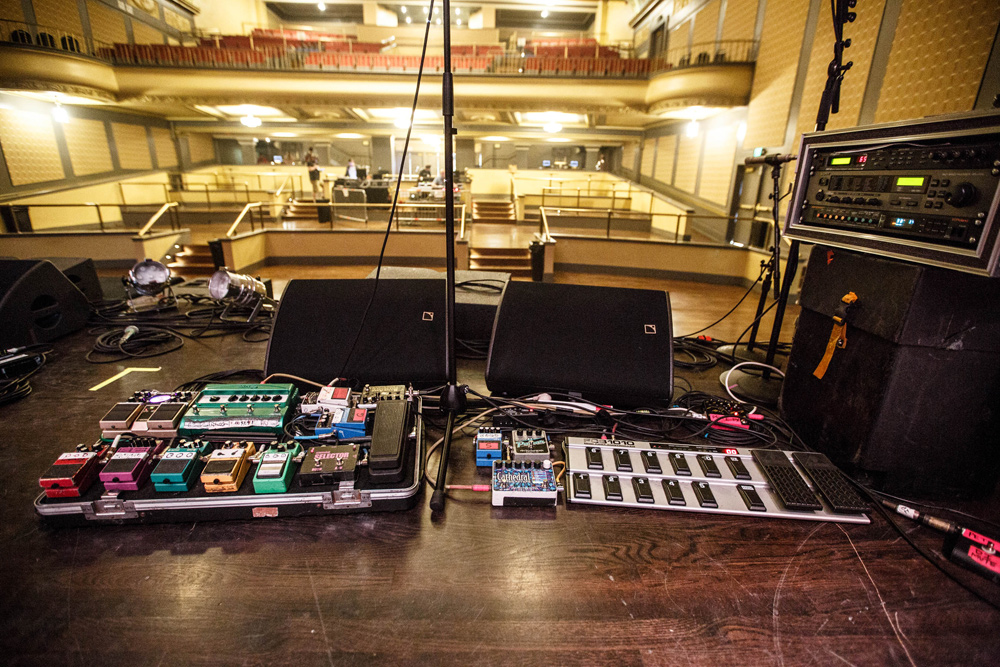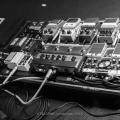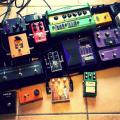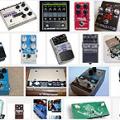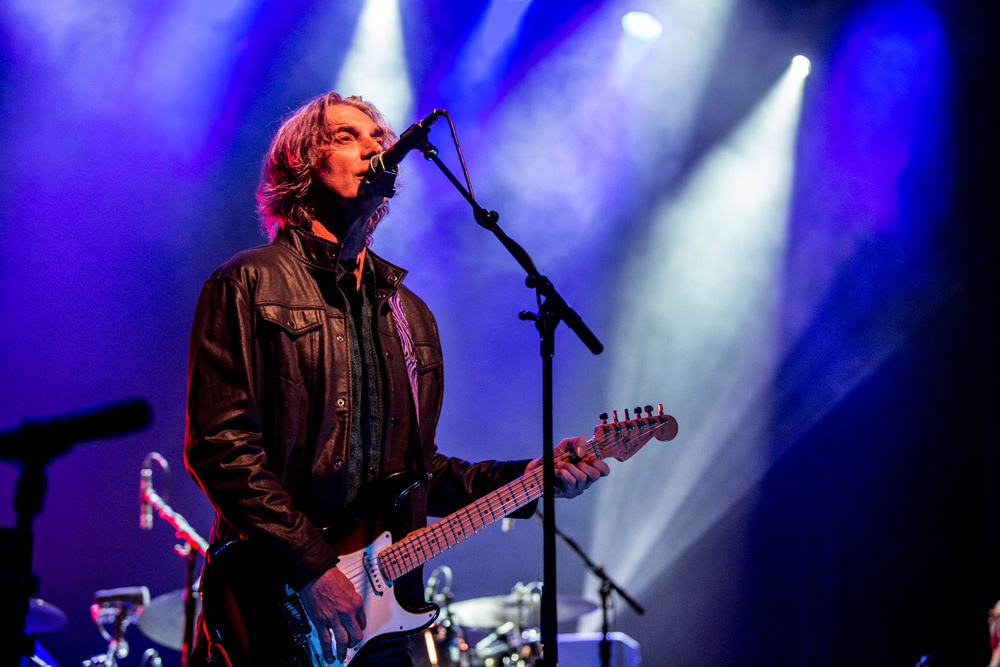 I can remember it very clear. Way back in 1988, I remember hearing and watching the video for the song Under the Milky Way by The Church on MTV. Immediately after that I picked up the album Starfish. I remember listening to this album during the summer of that year. One of the many albums that marked the soundtrack for that Montana summer, and when I listen to it today, it takes me back to that year – instantly.
I can remember it very clear. Way back in 1988, I remember hearing and watching the video for the song Under the Milky Way by The Church on MTV. Immediately after that I picked up the album Starfish. I remember listening to this album during the summer of that year. One of the many albums that marked the soundtrack for that Montana summer, and when I listen to it today, it takes me back to that year – instantly.
In 1989, I moved to California and one of my first friends there, who we shared many of our favorite bands, heard me playing Starfish, and basically told me it was the worst Church album. Worst Church album? Wait, there are more Church albums? Remember, in 1989 we didn’t have Wikipedia, Google, YouTube, etc. To know about bands – actually took some work and effort – and friend connections. I remember getting a twelve pack of beer and we went to his apartment where he began to school me on The Church. At that time, I assumed Starfish, was their first release – but my friend laid Of Skins of Heart, The Blurred Crusade, Seance and Heyday on me. Mind.. was blown.
Just a year later in 1990, The Church released Gold Afternoon Fix, and this would be my time to see them live. That year, I had a chance to see them at the Wiltern Theater in Los Angeles and loved every second of it. I remember having great seats and being on Peter Koppes’ side of the stage. At that time, I was just starting to get into guitar, and this was one of the first times I spent observing a musician from a musician’s point of view, and I was soaking it all in.
Earlier this year I was so excited to find out that The Church and Psychedelic Furs were touring together and coming to Missoula, Montana and playing at the great and beautiful Wilma Theater! After securing tickets, I was able to arrange a short interview per-show with Peter Koppes. But first, let’s check out some of his gear…
Left Side:
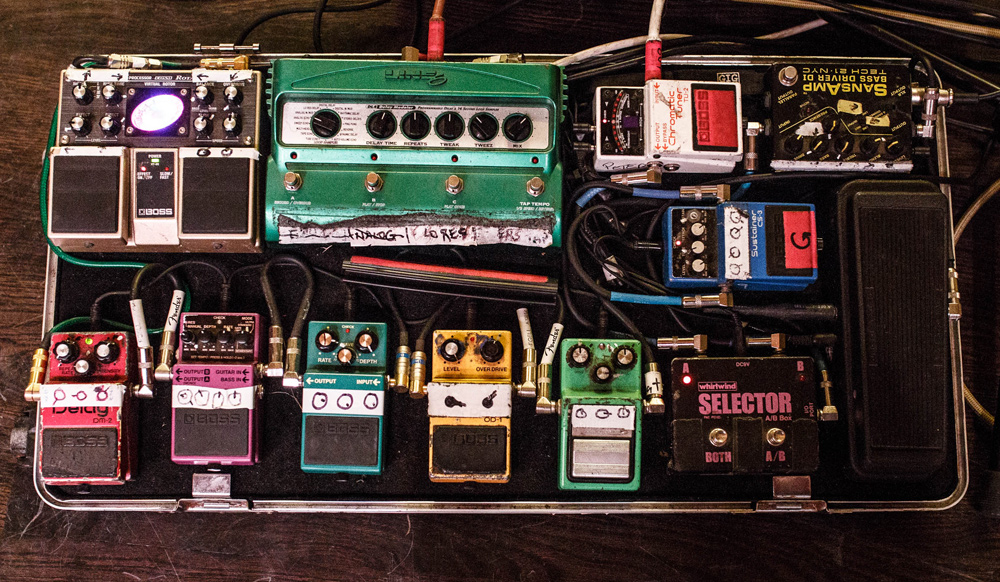 Dunlop GCB-95 Wah
Dunlop GCB-95 Wah
Whirlwind A/B Selector
Ibanez TS-9 Tubescreamer
Boss OD-1 Overdrive
Boss TR-2 Tremolo
Boss BF-3 Flanger
Boss DM-2 Delay
Boss RT-20 Rotary Ensemble
Line 6 DL4 Delay
Boss CS-3 Compressor/Sustainer
Boss TU-2 Tuner
Tech 21 SansAmp Bass Driver DI
Right Side:
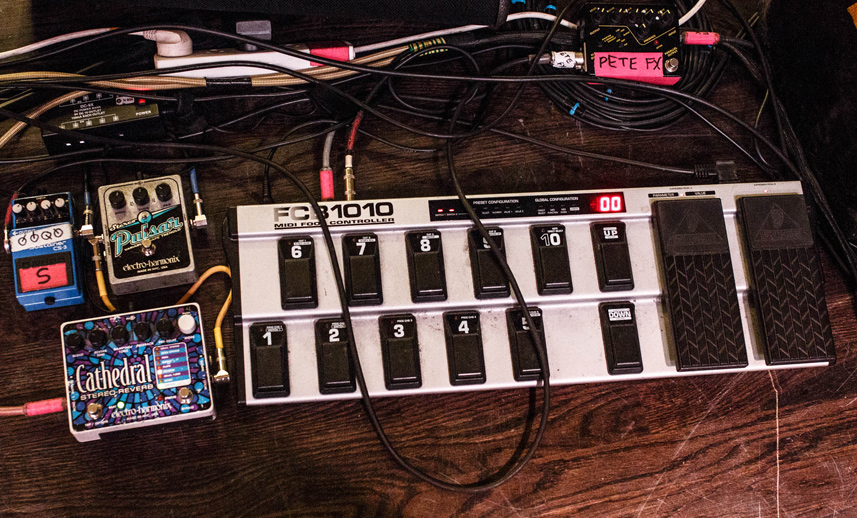 Boss CS-3 Compressor/Sustainer
Boss CS-3 Compressor/Sustainer
Electro-Harmonix Pulsar Temolo
Electro-Harmonix Cathedral Reverb
Behringer FCB1010 Midi Foot Controller
Tech 21 SansAmp Bass Driver DI
Rack:
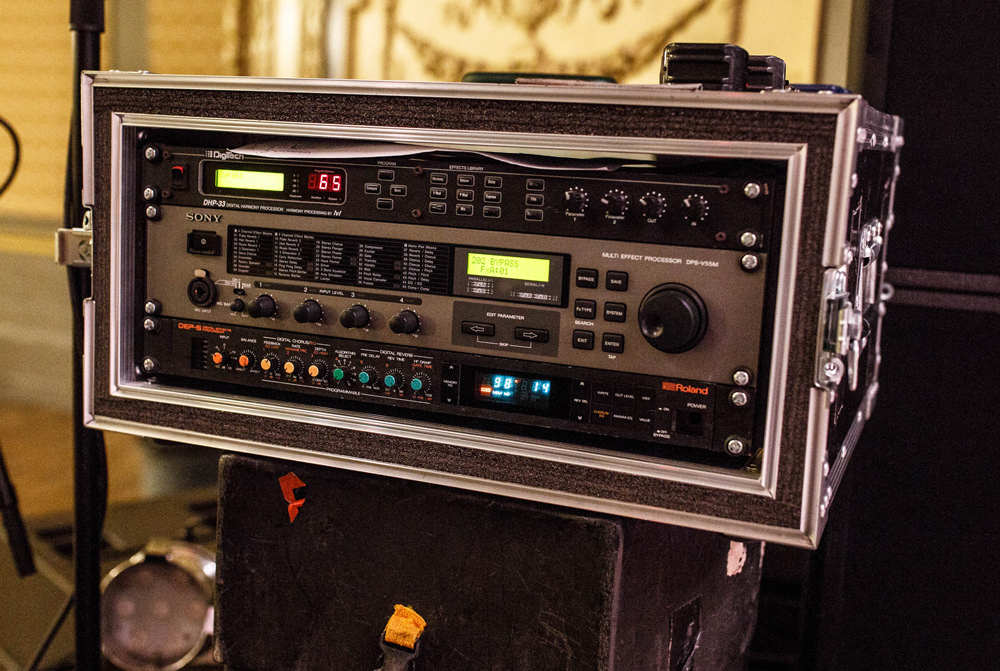 DigiTech DHP-33 Digital Harmony Processor
DigiTech DHP-33 Digital Harmony Processor
Sony DPS-V55M Multi Effect Processor
Roland DEP-5 Ditial Effects Processor
Now, I was expecting to ask some questions about pedals and the band, but I was pleasantly surprised.. we went down the rabbit hole of musical theory. Peter is incredibly knowledgeable on the subject, and in fact, he is writing a book on theory and scales (be sure to keep an eye out for it). I personally know a little about theory. Enough to scratch a way out of a rut and to put things in sort of perspective for me. I cannot use it as a forward thinking tool.. yet. And after this interview, I started researching abit more on my own about this. So get ready.. it’s time to get nerdy!
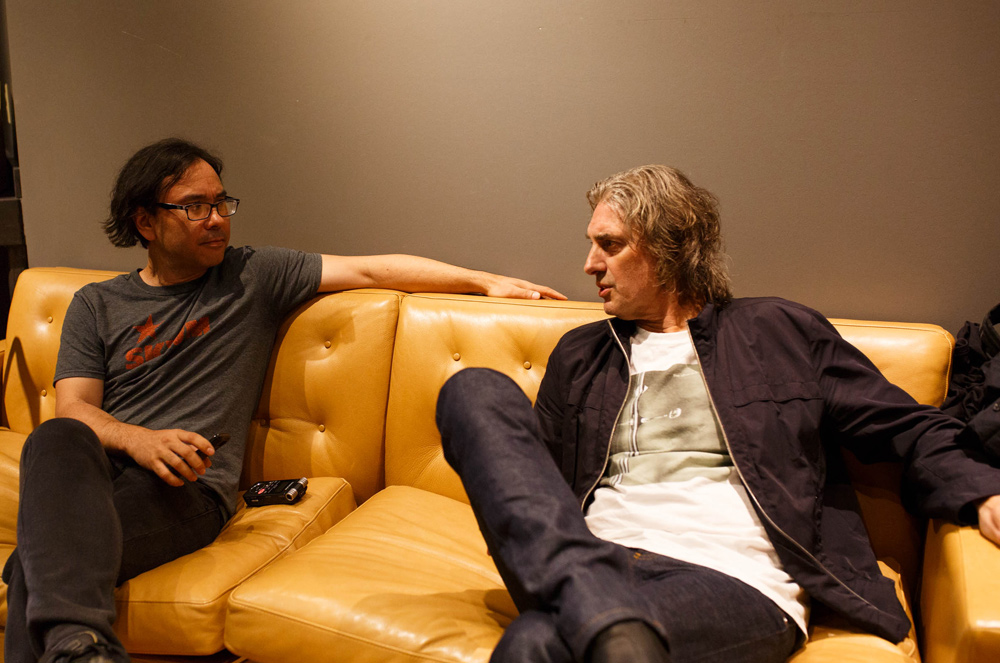 EB: Going back to the early days, how did the pedals evolve? What were the first pedals you used?
EB: Going back to the early days, how did the pedals evolve? What were the first pedals you used?
PK: The CE-1, the big Roland chorus. I wasn’t particular interested in guitar when I started playing music. My interest was in the Hammond organ. It was on loan at the house for a month I got into that sound. When I realized in 1980 when I got some Leslie speakers and plugged my guitar into the Leslie speakers, I went “of courseâ€. My whole guitar technique, is a keyboard players technique. I drone strings like a keyboard player holds notes across chords. As a guitar player, you lift your hands off the guitar and change chords, I never really liked that. I developed that jingle jangle style. Also, adding 5ths and getting that harmonic interplay that creates sounds that are not actually what you’re playing but they’re extra sounds. I created a technique putting these guitar parts together – it’s also a bit of a banjo technique – the pedaling the strings. That banjo technique of rolling arpeggios with this harmonic interference, if you like, of particular 5ths included in the sound. We find these days, where Marty would play in C, I would play an F, then he’ll be playing a G and I’ll be playing a C. When we did an orchestral event, the conductor couldn’t work out what to play.
Like Under the Milky Way, the same the thing, the guitar plays a G but the bass plays an E so it’s turned into an Em7. Guitar players think they’re playing a nice old happy G, but it’s an Em7 because the bass rules. And that’s the other thing that harmonically I realized since I played more and more guitar and more and more piano and realized that was the significant change for the Beatles when they started playing keyboard, especially for Paul having been forced onto bass from guitar, he realized the relationship in music is the bass and the midrange.
Pretty much as soon as he did Hey Jude he had become aware of “interferenceâ€. Because he throws in 7ths. I’m writing a book on guitar scales at the moment based on modal use of the pentatonic minor scale shifting for a major – doing all of the filling of the notes to make it either a major mode or minor mode. I add the flat 4ths, which in a minor scale it’s a flat 4th, but in major form it’s the minor 3rd which is the two aspects of the blues – the minor 3rd over major. Where the flat 4th is very bluesy even the Jewish Klezmer scale apparently they used it a lot. The “Devil’s note†was used a lot in the Old Testament.
So I’ve become very aware of musical theory because I had an old friend of mine who got a guitar lesson from a jazz guitarist in Australia from band called Galapagos Duck. He sat there and didn’t really show us any guitar and said “If you want to play guitar you have to know harmonic theory of the relationship of notes to key changes and modulationsâ€. He just showed us the progression of the chords. Which is like the white notes on the piano, if you put 3, the first 3, the 5th or the first 3rd, 5th and the 7th. Take the Cmaj7 to the Dm7, Em7 to the Fmaj7 to the G7 dominant , which everyone thinks is a blues chord but it’s actually a natural diatonic chord which is usually used in a second of a pair or before a 1st chord, but blues put it on the 1, because it’s called a dominant chord because it has a chemical influence on our brains – as music does – a happy chord and a sad chord, but there are very subtle other aspects of it. Like this progression of chords the C, Dm, Em, they’re all part of 7 chords that are all part of what I call a house or parent scale. People don’t realize that sometimes you don’t hit the parent chord in a song like Van Morrison’s Moondance. He’s just shuffling around between the 2nd and 3rd of the progression without hitting the parent 6th minor. When he’s goes to that 6th minor he throws it in as a dominant.
So I learned that very early on, and when you get into piano and realize the Beatles that the bass rules all of it any way – it’s just chemically you’re in tune with that. It’s a science, actually a quantum science. For instance if you take a slide and slide it down the string you have more notes that are out of tune than are in tune – an infinite number of notes. At the analog level, this is one that thing that digital will not reach the analog level. And our brain can compute that and it’s not out of tune and not offensive. Your brain can understand that it’s sliding down, it’s a portamento. It was the manifesto I’ve used for the last album. I wanted portamento and 2-4 rhythms on top of our usual harmonics. Our last album Further Deeper is the most sophisticated jazz, not blues jazz, Burt Bacharach maybe style jazz or Beatles jazz if you like or Hendrix jazz. When I analyze my guitar playing, its pretty particularly harmonizing awareness, the fact that you can abuse that as well on the brain and accept patterns, I’m always out there in the wild looking for patterns.
Thom Yorke is another guy I know in that level in modern music with that song Paranoid Android. And John Lennon had a natural instinct for that, as well as David Bowie, Kurt Cobain, Thom Yorke, I can see that thread. John Lennon was like double than any other musician.
EB: What have effects done to take that theory and enhance that further for you?
PK: The chorus pedal made it sound like an organ, and then we called ourselves The Church, which seemed like an obvious thing. I heard organs in churches and things like that as a kid which is probably why I liked the sound. They had organs because they’re more of a spiritual sound maybe. I’ve always been a spiritual person so I found that approach to playing a guitar like an organ has always been my interest. So then I got an echo unit and that allowed me to do arpeggios and interfere with arpeggios that I had. So now I have 2 echo pedals, 2 chorus pedals (flange and a chorus), I’ve got 2 tremolo pedals, I’ve got 2 overdrives.
EB: Do you have the duplicate effects set on different settings?
PK:  Yeah, my tremolo pedals are set so close to each other that they interfere with each other. You hear it in Miami, they kind of like interfere, they subtract and instead of getting that rhythm of the tremolo they interfere, I pretty much try to fuck with everything. On the song Toy Head, I play six strings on the chords of the chorus and not one of them is the same, so they’re six string chords. Every single note is a different note with open strings as well. And when anyone writes something, I like to go in there and fuck with it – really obtusely. On the last album I really went with open strings and went up the neck as well and really interfered when someone played C, F and G with a level knowing that you can play every note on the scale. If you go 1, 3, 5, 7, 9, then 9 is actually just the 2nd anyway and 11 is the 4 and 13 is the 6 so it’s just as best to spread them across 2 octaves, because if you put them close together they fuck each other up.
EB: So how disruptive do you like to get with it?
PK: I probably haven’t been as disruptive as Paranoid Android is. That really seems like a pop song, but he has some semi-tonal notes, semi-tone apart and he does it in a very jazzy way.
Then we had Under the Milky Way and we didn’t have a keyboard player so I had to try to create a way a guitar sound that emulated a keyboard very specifically or a synthesizer. I started experimenting with reverbs I found when you’re mixing sounds you got left and right stereo, but you can actually put things into reverb and because they’re in reverb you can actually hear them better than they are in present. And so you got this other dimension and of course treble and bass so it’s a 360 spherical thing that you can do with reverbs and tones like that to space things out. So I started playing pure reverb. And then someone had this harmonizer – a Digitech harmonizer (Digitech DHP-33). I said “this is got a 12-string sound to itâ€. Then I heard the harmonizer and thought that was interesting so we tweaked it a bit and sent it into the reverb unit and became this orchestral sound of like horns and strings. That became a big sound and I try not to over use it, but now it’s on pretty much on every song on the new album. It’s beautiful, spiritual wash of orchestral sound.
EB: Do you ever face challenges to get parts to cut through on the recordings with these big washes of sound?
PK: No. We’re all producers anyway so what we all see is what the end result will be and get there as fast as we can. You put in reverbs and fill up things. Some songs kind of have an emptiness but generally not. Starfish – that was a very raw record. Just good sounds, raw and the harmonizations were enough to carry it. I would say it is now too, but we’ve just gone beyond that. Now we’re just a psychedelic band – and psychedelic means mind expanding and the music is mind expanding with the harmonic interferences as well as the variety of sounds through the songs to keep it fun to hear as well.
EB: What are the racks you have on the side?
PK: That’s the original rack and Ian (Haug) went and bought a Strymon Big Sky and accidentally fluked the sound that I get. So I got a Big Sky as well, just as a spare just in case my rack goes down.  The racks got a little more of an organic thing. I found the same sound in a GT8 patch 999 or something.
EB: Are you referring to the “shimmer�
PK: The Big Sky is the shimmer, but you have to find it. You have to adjust it to find that sound. That orchestral harmonization thing. You can find it in a couple of devices, but I just use my original one. I have another rack that interferes with that again. Sometimes it’s got a really slow flange or I use the DEP-5. When we did Priest = Aura, I went through all the patches of the DEP-5 and wrote songs using those patches. So I have 2 of those but I have a whole rack at home.
EB: And that foot controller you have on the right hand side controls the racks?
PK: Yeah, and amp switching and expression pedal things. That’s the easy way of managing this. I haven’t found another easier way.
EB: So that Harmonizer is a pretty critical piece to The Church sound.
PK: Yeah, that is why I have that spare Big Sky set as a backup. And Ian uses it too now. So his side of the stage and my side of the stage are doing this orchestral thing too. I’m not sure if it’s overkill with him doing it as well. Some of the songs Marty (Wilson-Piper) used my gear to do things like Block and we’ve introduced it to some of the old songs to update them. There’s band called Mercury Rev used to have a beautiful, spiritual sound too, and they used it quite a bit, so why shouldn’t we (laughs).
EB: Are you guys planning on writing another album soon?
PK: When we go back to Australia we’re suppose to start another one. When we record, we usually write 3 albums worth of material. You get an album like Forget Yourself and then we release the album called Besides Yourself for the extra tracks. Some people like some of the stuff on the B sides. There is one called Parallel Universe, which I’m very, very proud of the songs on that. They were more Pink Floyd-y kind of songs, particularly one that I wrote called Reward.
EB: It was time to end things since I wanted to give the band and Peter a few moments before show time.
Here are some great photos of The Church by Amy Donovan Photography:
[huge_it_gallery id=”4″]
